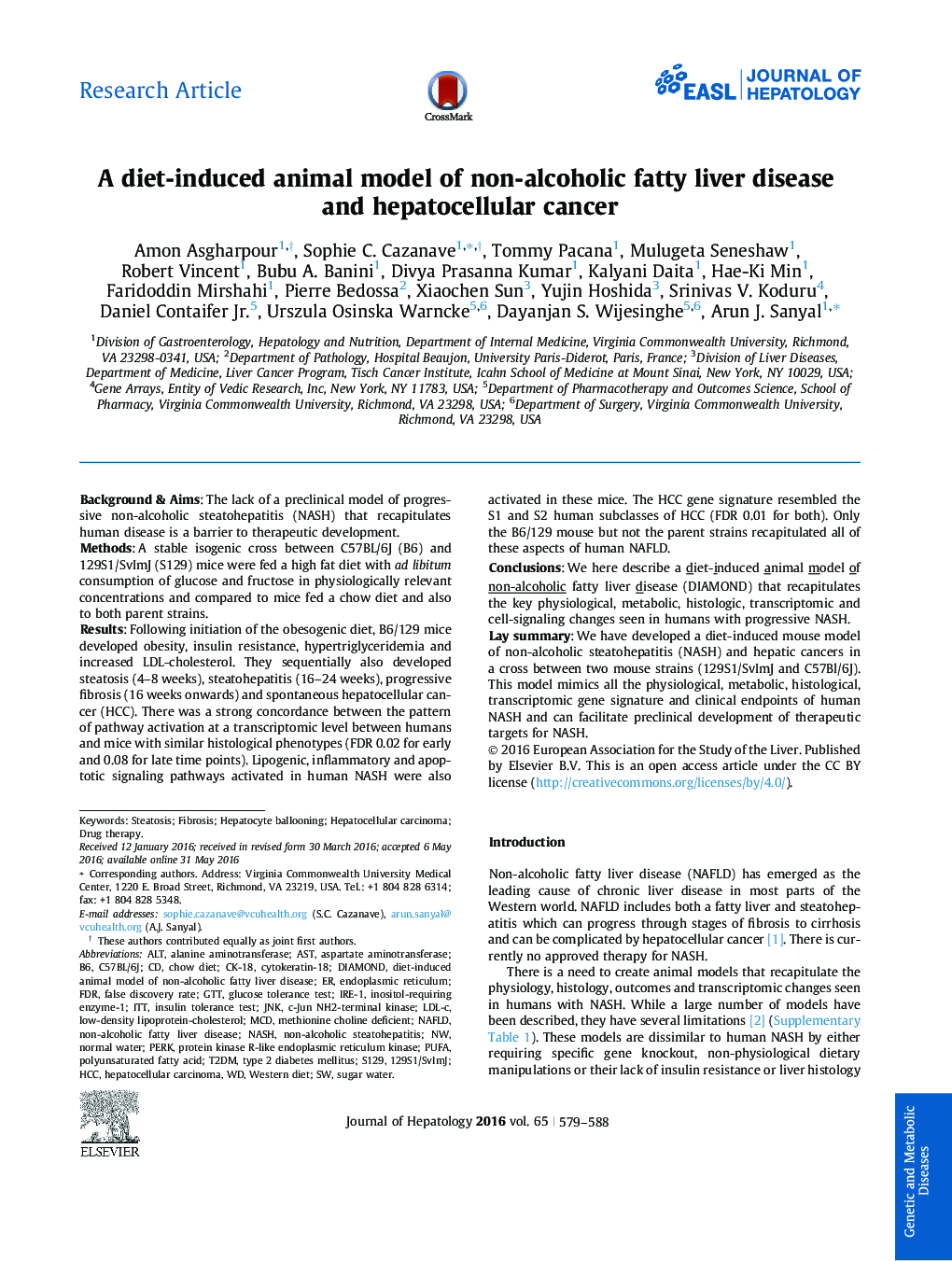| کد مقاله | کد نشریه | سال انتشار | مقاله انگلیسی | نسخه تمام متن |
|---|---|---|---|---|
| 6101158 | 1211099 | 2016 | 10 صفحه PDF | دانلود رایگان |
Background & AimsThe lack of a preclinical model of progressive non-alcoholic steatohepatitis (NASH) that recapitulates human disease is a barrier to therapeutic development.MethodsA stable isogenic cross between C57BL/6J (B6) and 129S1/SvImJ (S129) mice were fed a high fat diet with ad libitum consumption of glucose and fructose in physiologically relevant concentrations and compared to mice fed a chow diet and also to both parent strains.ResultsFollowing initiation of the obesogenic diet, B6/129 mice developed obesity, insulin resistance, hypertriglyceridemia and increased LDL-cholesterol. They sequentially also developed steatosis (4-8Â weeks), steatohepatitis (16-24Â weeks), progressive fibrosis (16Â weeks onwards) and spontaneous hepatocellular cancer (HCC). There was a strong concordance between the pattern of pathway activation at a transcriptomic level between humans and mice with similar histological phenotypes (FDR 0.02 for early and 0.08 for late time points). Lipogenic, inflammatory and apoptotic signaling pathways activated in human NASH were also activated in these mice. The HCC gene signature resembled the S1 and S2 human subclasses of HCC (FDR 0.01 for both). Only the B6/129 mouse but not the parent strains recapitulated all of these aspects of human NAFLD.ConclusionsWe here describe a diet-induced animal model of non-alcoholic fatty liver disease (DIAMOND) that recapitulates the key physiological, metabolic, histologic, transcriptomic and cell-signaling changes seen in humans with progressive NASH.Lay summaryWe have developed a diet-induced mouse model of non-alcoholic steatohepatitis (NASH) and hepatic cancers in a cross between two mouse strains (129S1/SvImJ and C57Bl/6J). This model mimics all the physiological, metabolic, histological, transcriptomic gene signature and clinical endpoints of human NASH and can facilitate preclinical development of therapeutic targets for NASH.
188
Journal: Journal of Hepatology - Volume 65, Issue 3, September 2016, Pages 579-588
